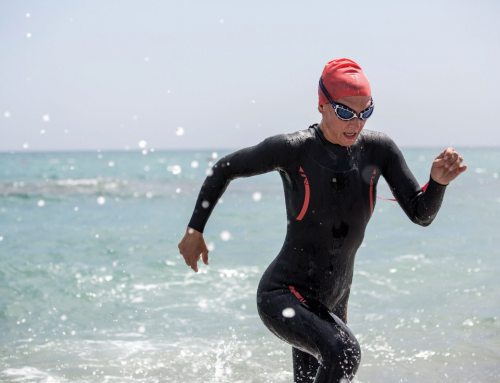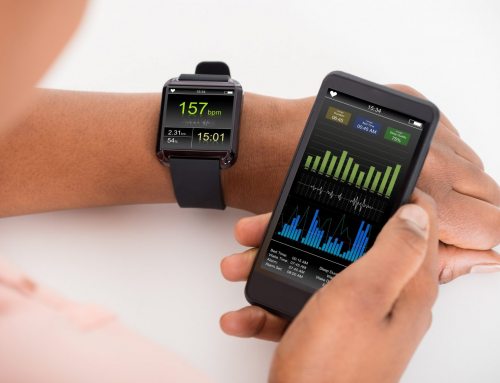
By Meredith Falcon
We’re bombarded with shows like “The Biggest Loser” that in an effort to advocate health and taking responsibility for one’s journey unfortunately present an unrealistic view of the average fat-loss experience. Thus, we nearly kill ourselves from the start, excitedly jump on the scale after a nine-day personal boot camp, and then are shocked when the number is not a multiple of 3.
Initial fat loss is different from person to person, and depends on many factors, such as current nutritional habits, amount of fat needed to lose, testosterone and other hormone levels, and the beloved genetic factor. Eventually, there comes a point when we hit a plateau. It’s the dreaded word in the figurative, and literal, uphill climb of losing weight. But it happens. There are a few things at work that we have to understand to break through the plateau and spark progression.
First, the leaner we are, the harder it becomes to lose fat.
Putting ourselves in a position to lose fat is actually quite stressful on the body and metabolism. It involves consuming less energy (calories) than you burn (through exercise and lifestyle), and that alone is enough for the body to want to conserve itself; we were made for survival. This becomes an even greater factor as body fat decreases to an athletic and essential-for-living level. When our bodies sense a drop in body fat and energy consumption, our metabolism “comes to the rescue” by slowing down.
Second, the body is very adaptive.
This hints at what we just discussed, but also shows up in our ability to tap into fat stores during exercise. Our bodies are very smart; they want to find the most efficient way to do something and use minimal energy (burning calories) to do so. While an excellent survival capability, this trait can hinder fat loss. Why? The body becomes very efficient when the same exercises are repeated over and over, thus burning fewer calories over time. Not ideal when we’re still pounds away from our goal.
So how can we burst through a plateau and ignite that fat-burning flame again?
LOOK AT YOUR PLATE.
The fact is that no amount of exercise makes up for a poor diet. You can swing a kettlebell until you get whiplash, but if your energy consumption does not put your body in a state to consistently burn fat, you won’t. Period. I find this is where most people reach a plateau in the first place. They’ve taken all the right steps, continued on the journey, and then begin to slip ever so slowly back into poor habits. Portions creep up a little, an extra splurge or two during the week … you get the picture. Bottom line: To maximize results when it comes to losing fat, what goes in your mouth is more than 80 percent of the equation.
HIT THE ELIPTICAL.
Or treadmill, or bike, or stair-climber. I rarely meet anyone who has the problem of too much cardio. Yes, there are exceptions, but for my average fitness client there is always room for a few more laps. Increasing cardiovascular exercise ultimately means burning more calories, and sometimes it’s simply a matter of adding an extra 30 minutes here and there to spark change. Particularly for those of you with sedentary jobs or lifestyles, it’s imperative to do something active nearly every day to keep that fat fire burning.
MIX IT UP.
We have to keep the body guessing. When it comes to your weight training and cardio, you must change the variables to continue to see change. This refers to intensity, duration, sets, reps, method, order, etc. Mix it up. Get on the treadmill for a 10-minute jog, then move to the row machine and go all-out for five minutes. Then back to the treadmill for an incline hike. Do your standard leg workout in reverse order. Add two sets of a different exercise to Monday’s workout. Your body does not have time to adapt, and that is the point. We want it to WORK to complete the WORKout.
Hitting plateaus is an inevitable part of the journey. They become a wall in the middle of our path, and like it or not we must figure out a way to move past them if we desire to see more change. Stop. Assess. Then MOVE. The vantage point from that plateau was not meant to be your destination.
4 Small Goals to Get Started
Do you dream of being the same size you were in high school or when you got married? That will take work if it means losing a lot of weight. Don’t rush. Setting small, realistic goals will get the scale moving in the right direction. Start by trying to lose 5-10 percent of your weight, and give yourself plenty of time and some flexibility to reach that goal. Keep in mind that it takes most people about six months to achieve that degree of weight loss.
Rather than saying “I should eat less at dinner and exercise more,” set specific and short-term (that is, daily or weekly) goals. Harvard Medical School offers these four examples:
- I will choose a few healthy dinner recipes and shop for the ingredients on Sunday.
- I will bring a healthy lunch from home to work or school at least three times next week.
- I will call a friend to take a walk after work on Monday and Wednesday.
- I will keep tempting foods out of the house (or out of sight).
# # #
Meredith Parker Falcon is the head personal trainer at ActivEdge Fitness & Sports Performance. As a Certified Personal Trainer (CPT), she has used her nutrition knowledge and exercise experience to compete in figure competitions at the state and national level. You can follow her on her blog at MeredithFalcon.com or go to ExperienceTheEdge.com for more details on how to contact her directly.






